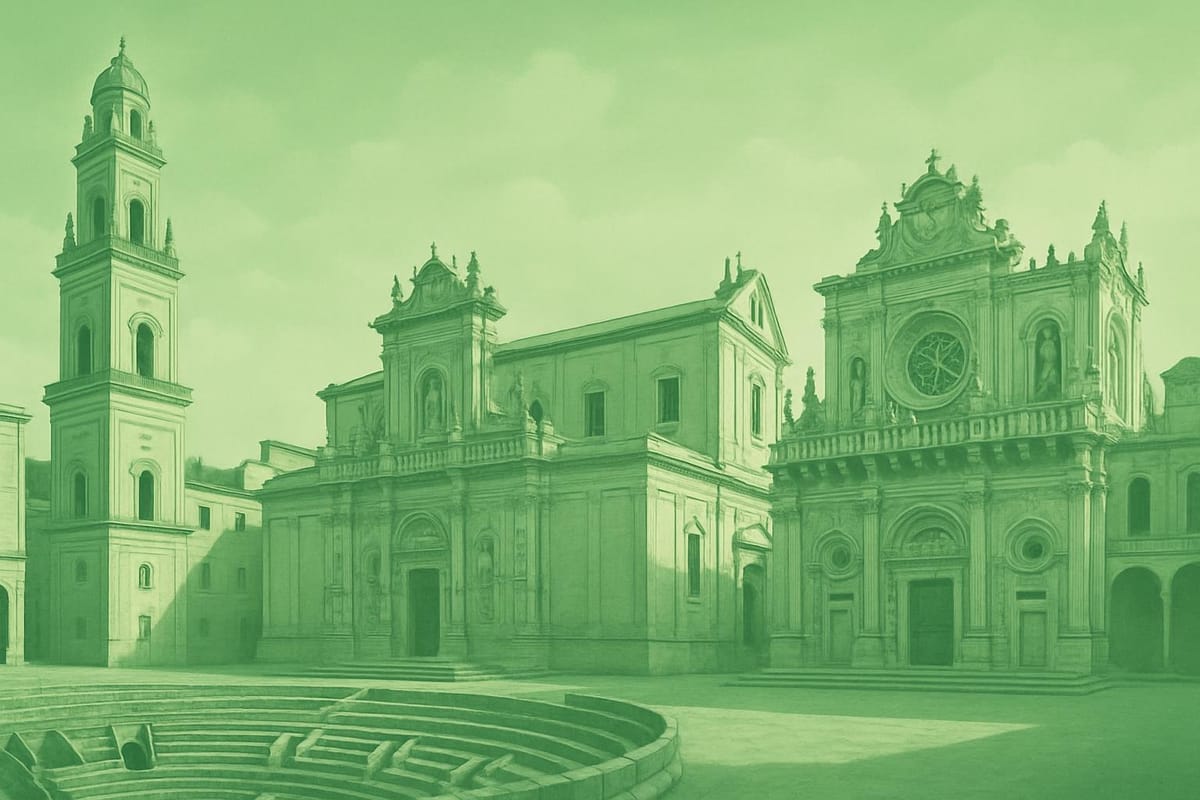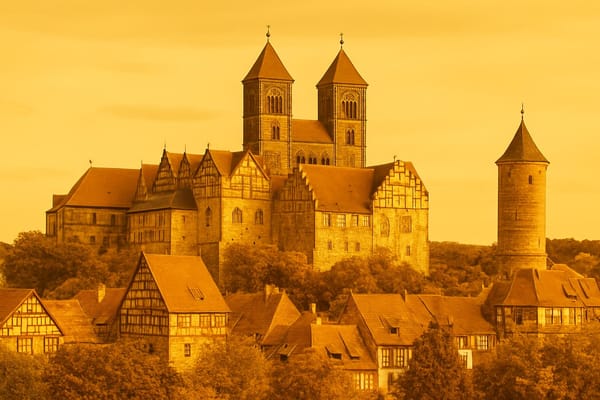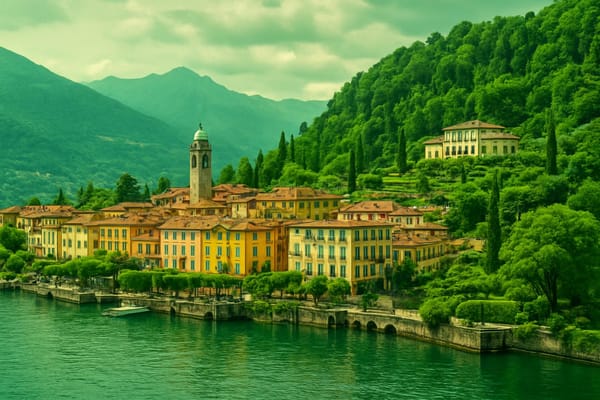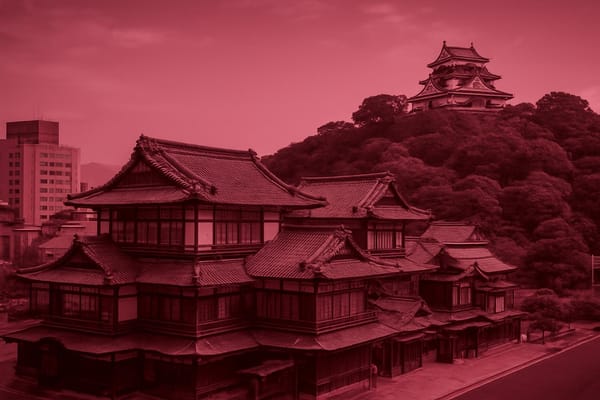Lecce
Discover Baroque gems, Roman ruins, lively historic center, sunlit beaches and local cuisine.

Important things to know about Lecce
Lecce, Italy, is a city of soft limestone warmth and lived-in elegance where daily life unfolds against façades of honey-colored stone and intricate carved details, a place that blends local craftsmanship with contemporary rhythms; the city pulses with market mornings, neighborhood cafés, artisans shaping Lecce stone and papier-mâché masters sustaining centuries-old trades, while university students, families, and artisans weave a social tapestry that keeps traditions dynamic rather than frozen. In Lecce the culinary scene mirrors the region’s agricultural bounty, with simple, robust flavors driven by olive oil, fresh vegetables, and homemade pasta, and a culture of long meals that celebrates conviviality and seasonal produce; this deeply rooted food culture supports small producers and fosters a sense of community identity throughout the city’s streets. Economically, Lecce functions as a hub for education, craftsmanship, and regional services, balancing heritage industries with emerging creative enterprises and gastronomy-focused startups, and its compact scale makes it walkable and intimate, encouraging slow rhythms and neighborhood connections. The climate encourages outdoor life for much of the year, and local festivals, language, and daily rituals reflect Salento sensibilities and Puglian warmth, so that living in or experiencing Lecce feels like stepping into a richly textured urban fabric where history, everyday life, and artisanal skill coexist, creating an atmosphere that is both welcoming and quietly sophisticated.
Sightseeing hot-spots in Lecce
Lecce is a jewel of Puglia whose sightseeing highlights revolve around an extraordinary Baroque heritage that feels like an open-air museum. Wandering through the historic center, visitors immediately notice the warm, honey-colored Lecce stone carved into exuberant façades, balconies and church portals. A stroll toward the Basilica di Santa Croce reveals intricate sculptures and a rose window that exemplify the city’s ornate style, while the nearby Duomo di Lecce offers a serene cathedral square where local life and sacred architecture meet.
Piazza Sant'Oronzo is a focal point for any travel itinerary in Lecce, where the layered history of Roman ruins sits beside bustling cafés and lively markets. The partially excavated Roman amphitheatre under the square invites reflection on centuries of continuous habitation and provides a striking contrast to the later Baroque churches that dominate postcards and travel guides. Sightseeing in Lecce also means discovering hidden courtyards, artisan workshops carving local stone, and the culinary side of Puglia with rustic trattorie that showcase olive oil, fresh seafood and regional wines.
For those planning a trip, Lecce’s compact size makes it ideal for leisurely exploration on foot, blending cultural landmarks with modern tourism comforts. Photography enthusiasts will find endless motifs-from decorative masks and cherubs on façades to sunlit alleys leading to quiet piazzas-while history lovers can trace influences from Roman, Norman and Spanish periods. Whether your focus is architecture, history, or simply the atmosphere, Lecce’s sightseeing highlights create an unforgettable southern Italian experience that rewards slow discovery.
Hotels to enjoy in Lecce
Lecce, Italy is a treasure for travelers looking for authentic Puglian charm and an array of hotels to suit every taste and budget. Nestled in the heart of the Salento peninsula, the city’s historic center offers boutique and luxury stays within walking distance of ornate Baroque churches, lively piazzas and the ancient Roman amphitheatre. Many accommodations pair modern comforts like free Wi‑Fi, air conditioning and on-site parking with local character, converting period palazzi into stylish guesthouses and refined boutique hotels. Visitors seeking value will find family-run B&Bs and budget-friendly options that still deliver excellent service, a homemade breakfast and personal tips for discovering Lecce’s hidden corners and vibrant dining scene.
Choosing hotels in Lecce, Italy is as much about location as it is about experience: some properties focus on romantic stays ideal for couples exploring candlelit streets, while others emphasize family-friendly rooms and easy access to nearby beaches and day trips around Puglia. To make the most of your visit, prioritize accommodation that highlights local cuisine, tour assistance and flexible check-in policies-features that enhance sightseeing and cultural immersion. Whether you want a luxury suite, a charming guesthouse or a practical base for exploring southern Italy, Lecce’s lodging options combine historic atmosphere with modern amenities to create a memorable and convenient stay.
Restaurants to try in Lecce
Lecce is a treasure for food lovers, where Lecce restaurants mingle baroque architecture with a vibrant culinary scene that celebrates Salento cuisine and fresh regional produce. Strolling through the historic center, you’ll pass cozy trattoria and rustic osteria whose menus spotlight handmade pastas like orecchiette, slow-cooked ragùs, and seasonal vegetables dressed in golden olive oil. Many places pride themselves on farm-to-table ingredients and inventive seafood preparations drawing on the nearby Adriatic and Ionian coasts; the result is a balanced offering of hearty comfort food and elegant plates ideal for sampling with a glass of local wine from Puglia’s vineyards. Outside the more casual venues you’ll also find fine dining establishments where chefs reinterpret traditional flavors with contemporary techniques, while neighborhood cafés and gelaterie keep the atmosphere lively from morning espresso to late-night conversations.
For travelers searching for the best restaurants in Lecce or wondering where to eat in Lecce, expect an emphasis on hospitality, long leisurely meals, and menus that change with the seasons. Booking ahead is wise during summer and festival weekends, and many locals recommend pairing tasting menus with regional wines for a fuller experience. Whether you prefer a bustling piazza table perfect for people-watching, an intimate courtyard for a romantic dinner, or a lively enoteca to discover new varietals, Lecce’s dining scene offers memorable moments: try a savory rustico leccese for a street-food snack, follow a sunset aperitivo with a seafood risotto, and savor how tradition and innovation come together in this gastronomic corner of Puglia.
Best shopping stops in Lecce
Lecce shopping is a delightful mix of Baroque charm and modern Italian style, where cobbled streets lead you from high-end boutiques to tiny artisan studios. Strolling along Via Vittorio Emanuele II and the surrounding historic center, visitors searching for the best of shopping in Lecce will find handcrafted leather goods, elegant clothing from local designers, and distinctive homewares that reflect the Salento identity. Souvenir hunters and style seekers alike appreciate the range of boutiques offering curated fashion alongside family-run stores selling ceramics, linens, and locally produced olive oil and wines. Food lovers will want to sample and buy packs of regional specialties-most notably the beloved pasticciotto pastry and artisanal preserves-while those keen on interior decor can pick up pieces inspired by Lecce’s ornate stonework and light-filled courtyards.
The real highlight for many is the flourishing scene of artisan workshops where traditional crafts are kept alive: expect to discover hand-painted ceramics, delicate lace, and the singular art of cartapesta-Leccese papier-mâché that makes for unforgettable keepsakes. Shopping in Lecce means more than retail therapy; it’s an opportunity to meet makers, commission bespoke items, and bring home authentic pieces that tell a story of place and craft. Whether you’re planning a dedicated shopping day or weaving purchases into your sightseeing, tips for successful Lecce shopping include seeking out small ateliers in side streets, timing visits around local markets, and leaving room in your luggage for the special finds that define this lively southern Italian destination.
Nightlife highlights in Lecce
Lecce nightlife comes alive in the honey-colored streets of the historic center, where stylish locals and curious travelers gather for an unforgettable evening. From elegant stone courtyards to buzzy piazzas, the rhythm here blends aperitivo culture with inventive cocktails, craft beer and refined regional wines from Puglia. Bar terraces spill into lanes beneath baroque façades, creating the perfect setting for people-watching, street performers and intimate live music sessions. The downtown scene is walkable and atmospheric, making it easy to hop between cozy wine bars, trendy lounges and convivial spots serving up hearty local cuisine and late-night street food that reflects the rich flavors of the Salento peninsula.
When the clock ticks later, Lecce's energetic clubs and event venues ramp up with DJ sets, themed nights and open-air parties that appeal to a diverse night crowd. Seasonal beach parties and boat events along the coast add a sun-and-music dimension to the city's after-dark calendar, while cultural festivals often extend into nocturnal celebrations that showcase regional dance and live bands. Whether you're seeking laid-back jazz, bustling cocktail bars or high-energy dance floors, Lecce nightlife offers a dynamic mix that highlights the best of southern Italy’s Salento spirit and keeps the night moving well past midnight.
Getting around in Lecce
Lecce is well served for travelers: the nearest airport is Brindisi Airport (Papola Casale), about 40 km away and typically a 30–40 minute drive, with regular shuttle buses, regional trains via Brindisi station, taxis and car-rental options making the transfer straightforward; for international connections many visitors also use Bari Airport, roughly 150 km to the north, which offers additional flights and train links. The city's rail hub, Lecce railway station, sits conveniently near the historic center and is served by Trenitalia regional and long-distance trains-including InterCity and some Frecciabianca services-providing direct and frequent connections along the Adriatic corridor to Bari, Brindisi and beyond, while night trains and InterCity routes link to Rome and other major Italian cities. For exploring the Salento peninsula, the local network operated by Ferrovie del Sud Est offers essential connections to towns such as Otranto, Gallipoli and Martina Franca, making train travel a practical choice for day trips along the coast; overall the combination of airport shuttles, taxis and a reliable mix of regional and long-distance train services makes reaching and navigating Lecce easy for tourists and business travelers alike.
Culture must-see's in Lecce
Lecce, the luminous heart of Puglia, is celebrated across Italy and beyond for its exuberant Baroque architecture and warm Apulian spirit. Walking through the historic center feels like stepping into an open-air museum where façades glow with the honey-colored Lecce stone, carved into ornate rosettes, cherubs, and swirling foliage that testify to centuries of skilled craftsmanship. The city's elegant cathedral, the Roman amphitheater hidden beneath the Piazza Sant'Oronzo, and the many palazzi and churches showcase a blend of Roman, medieval, and Baroque influences that make Lecce a magnet for lovers of architecture and history. Local artisans keep traditions alive with the delicate art of cartapesta (paper mache), while museums and galleries display contemporary and classical works that reflect Lecce’s evolving cultural identity in the wider context of Salento and southern Italy.
Beyond monuments, Lecce's cultural life pulses in its festivals, music, and cuisine: seasonal events and street performances celebrate the traditional dance of pizzica, and summer nights fill with live music, theater, and open-air cinema that attract both locals and travelers. Food culture here is a sensory journey through rustic Puglian cuisine-from freshly made orecchiette and local olive oil to sweet pasticciotti-served in family-run trattorie where recipes are passed down through generations. The city's compact size makes it ideal for slow, immersive exploration, pairing leisurely café culture with visits to artisan workshops and bustling markets. For those seeking an authentic slice of Italy, Lecce combines monumental beauty, living traditions, and a convivial atmosphere that together create an unforgettable cultural experience.
History of Lecce
Lecce, in the heart of the Salento peninsula of Apulia, carries a layered and dramatic past that makes the history of Lecce both rich and visible in its streets. Originally settled by the ancient Messapii and influenced by Greek colonists, the city later became an important Roman center known as Lupiae, leaving behind monumental traces like the Roman theatre and amphitheatre that still punctuate the urban fabric. After the fall of Rome, Lecce underwent Byzantine influence and successive medieval transformations, during which it became an episcopal seat and a fortified town within competing regional powers. Its strategic position made Lecce a crossroads for traders and conquerors, shaping a cityscape where classical ruins nestle beside medieval walls and Renaissance palaces. Over centuries, the local economy and civic identity continued to evolve, but it was during the early modern period that Lecce began to fully express a unique architectural vocabulary tied to its natural resources and cultural ambitions.
The most famous chapter in the history of Lecce is the emergence of the Barocco Leccese, a flamboyant regional variation of Baroque architecture crafted from the warm, malleable pietra leccese. Between the 16th and 18th centuries, under Spanish rule and local patronage, artists and stonecarvers transformed churches, palaces and public monuments into ornate façades adorned with floral motifs, putti and mythic figures-exemplified by the Basilica di Santa Croce and the Duomo complex. This period turned Lecce into an open-air museum of Baroque exuberance, attracting visitors and scholars drawn to its distinct style. In the 19th and 20th centuries Lecce navigated modern upheavals, from Napoleonic reforms to Italian unification, while preserving and restoring its heritage. Today, the city's layered past fuels cultural tourism, academic interest and conservation efforts, as locals and international visitors alike explore archaeological sites, lively piazzas and museums. The ongoing commitment to preserving monuments and promoting local crafts keeps Lecce’s story active, ensuring that its architectural splendor, artisanal traditions and cinematic streetscapes remain a key part of the region’s identity and appeal.



